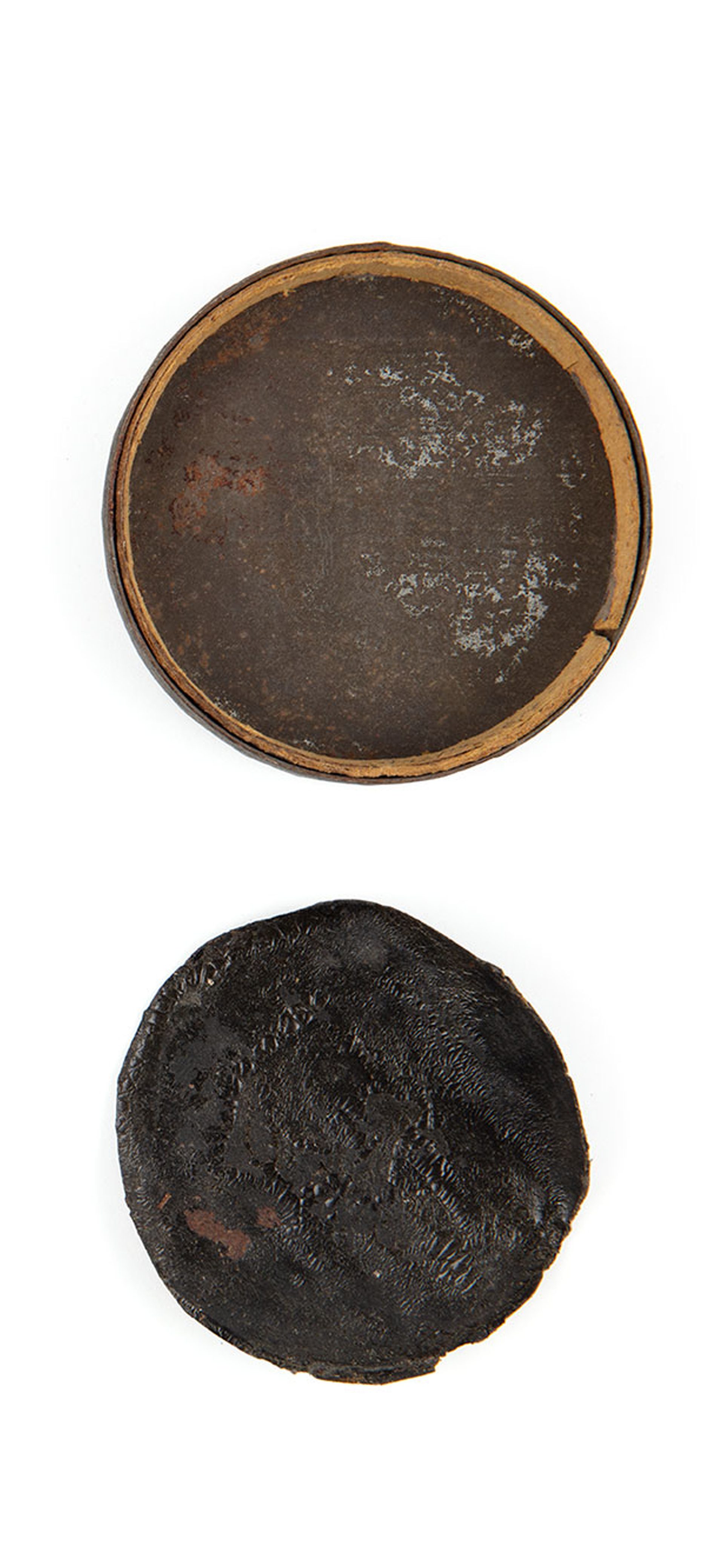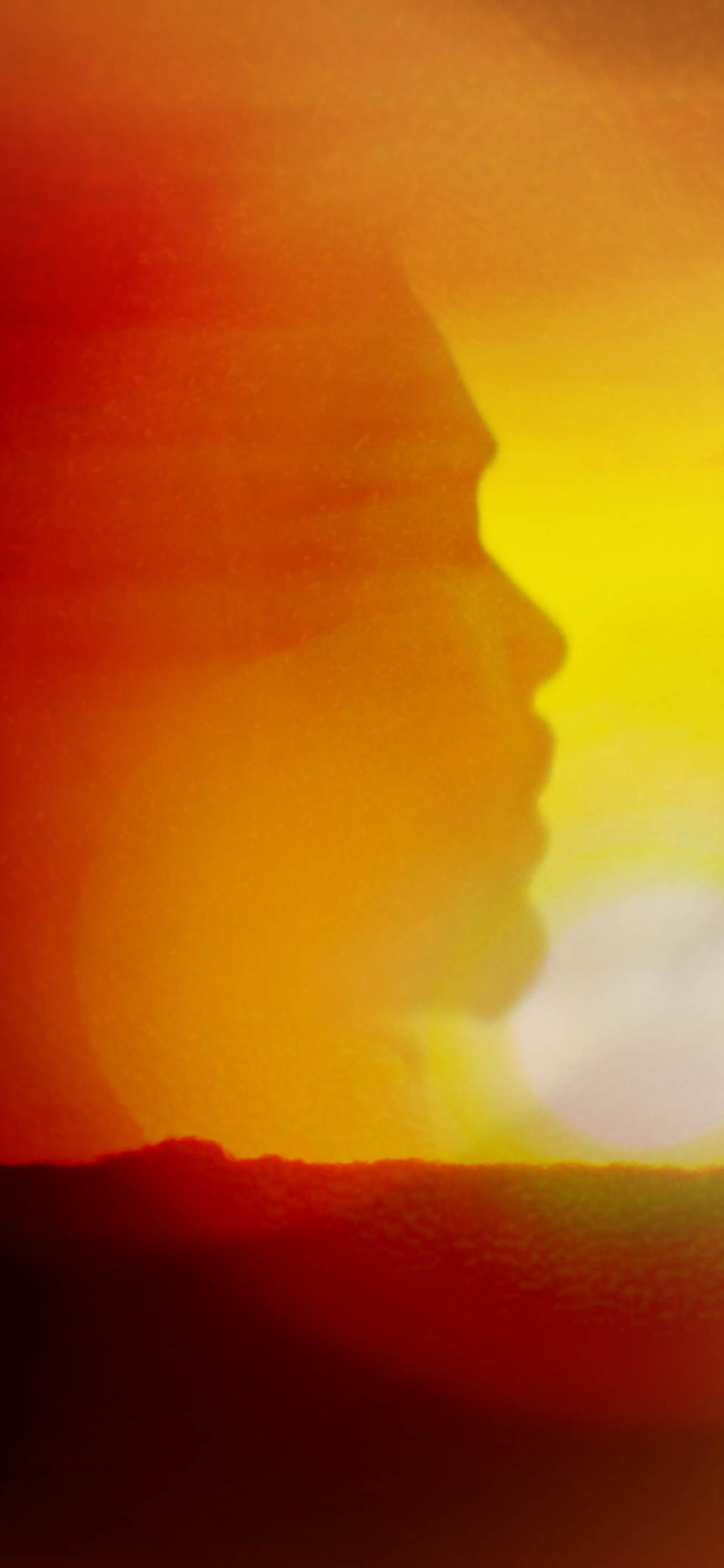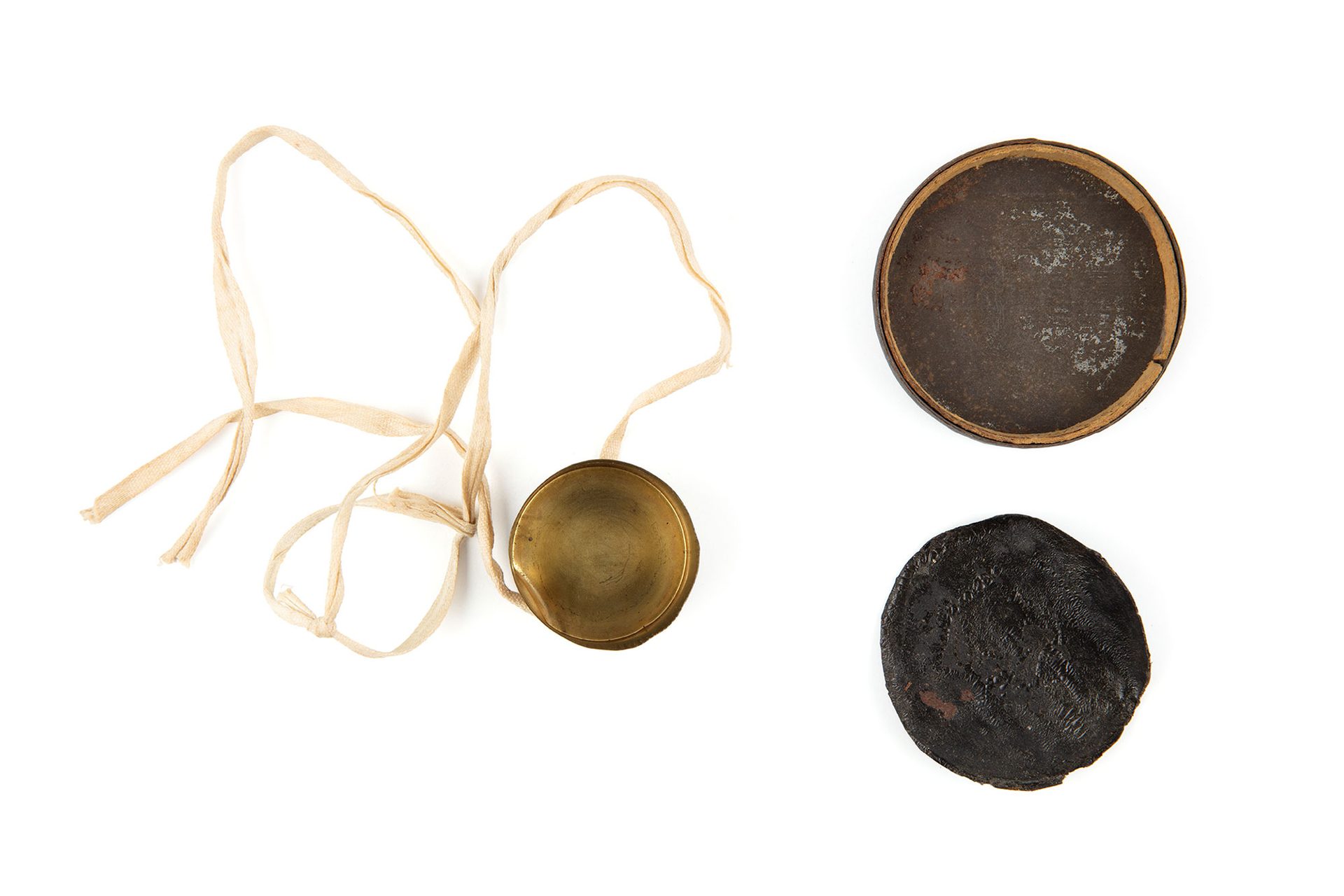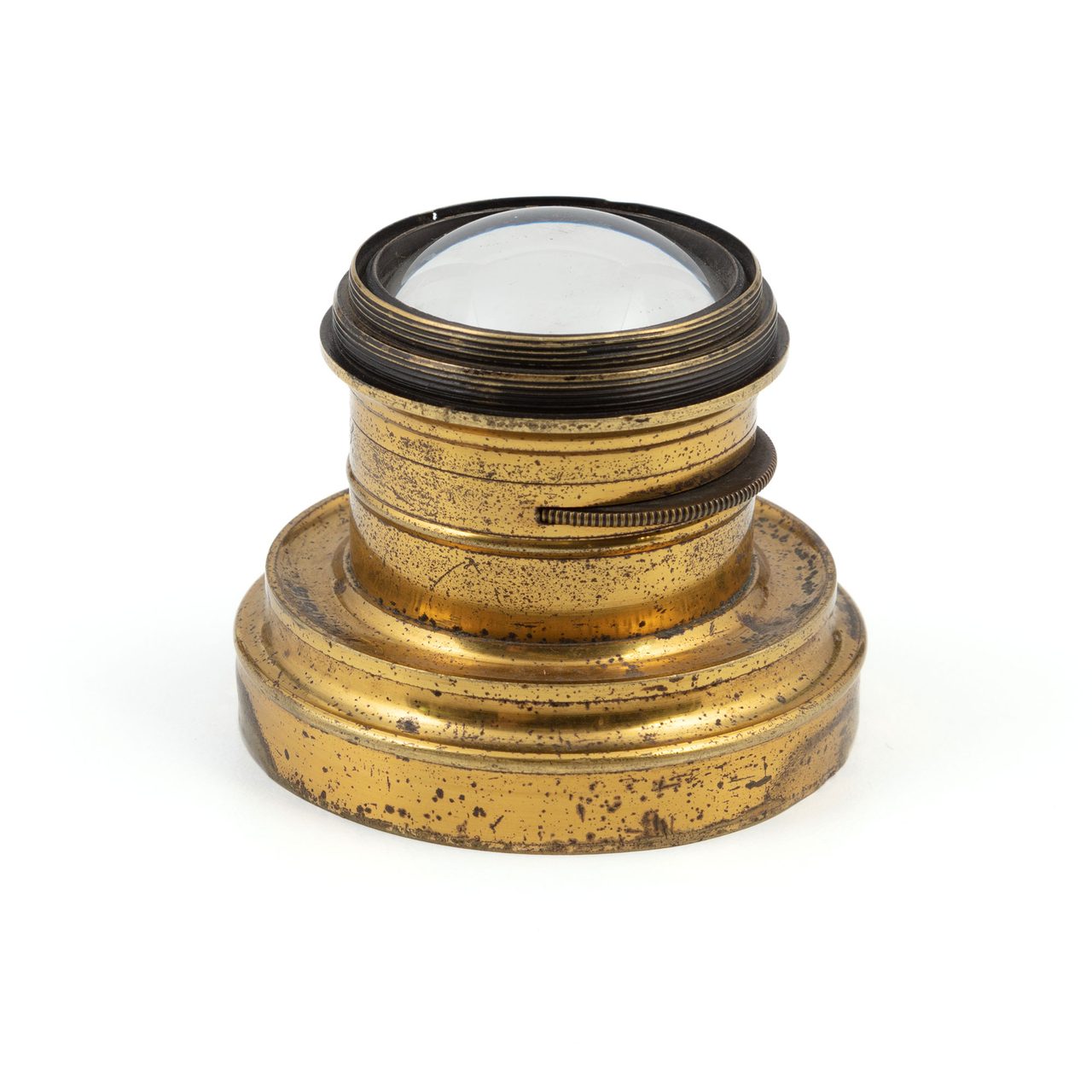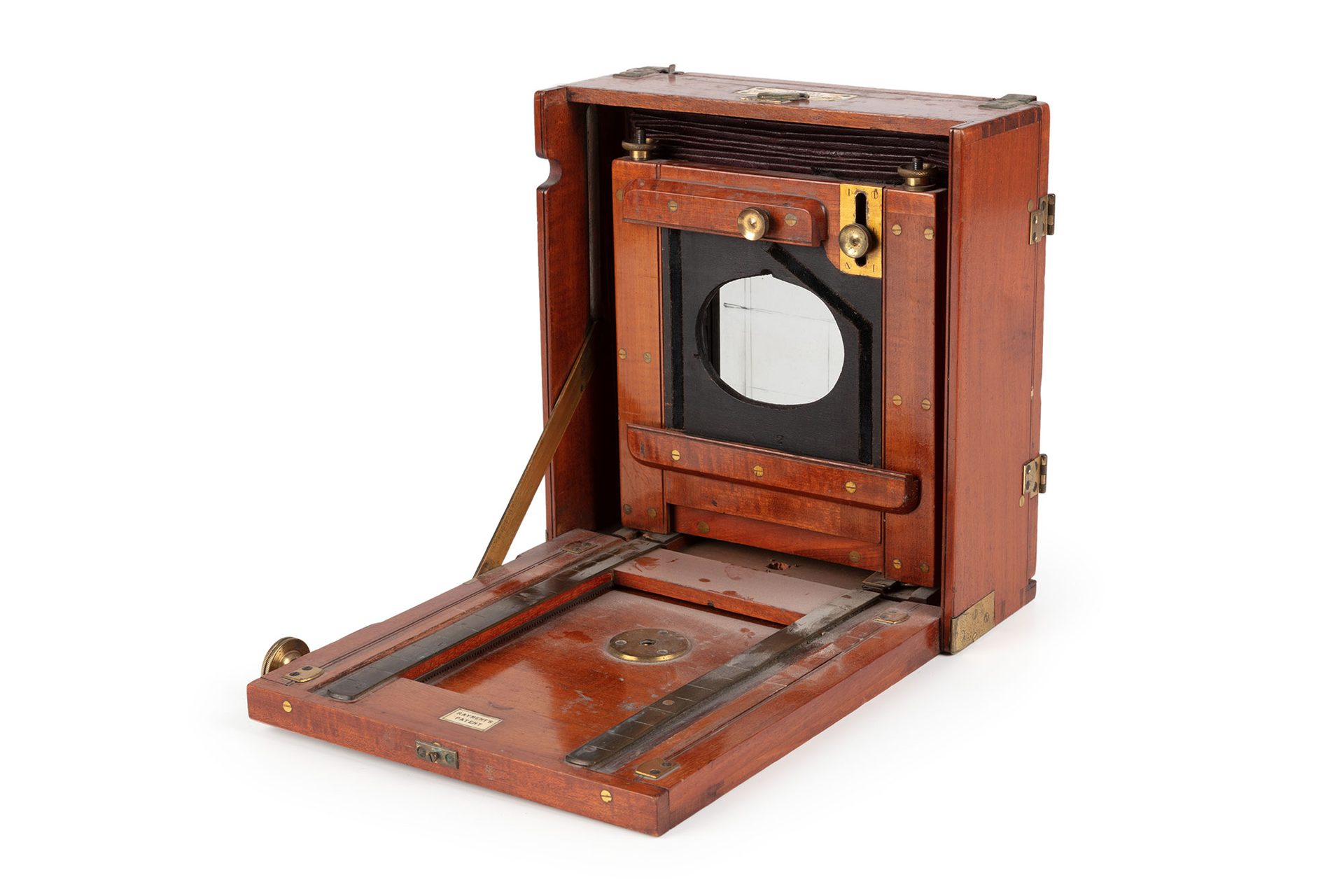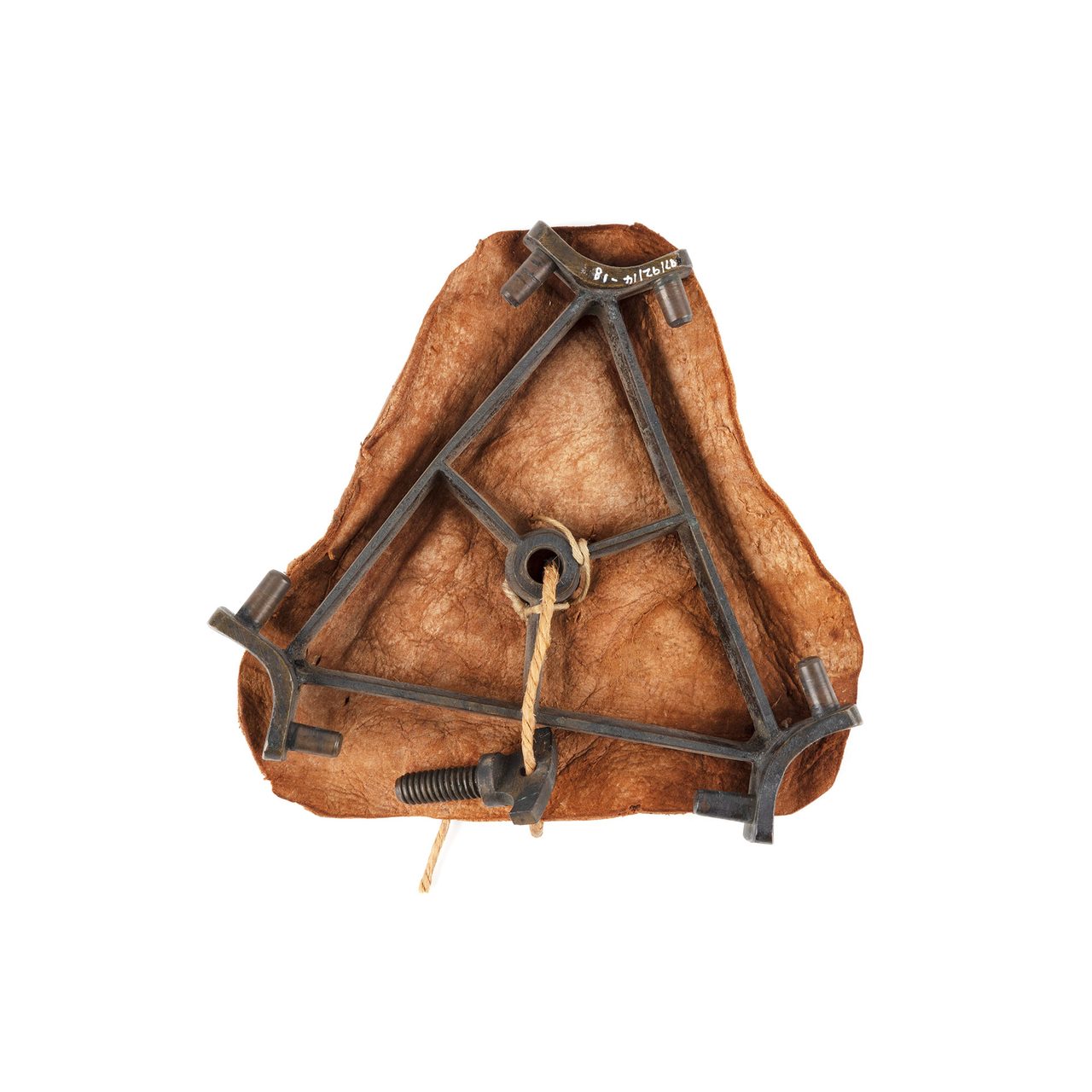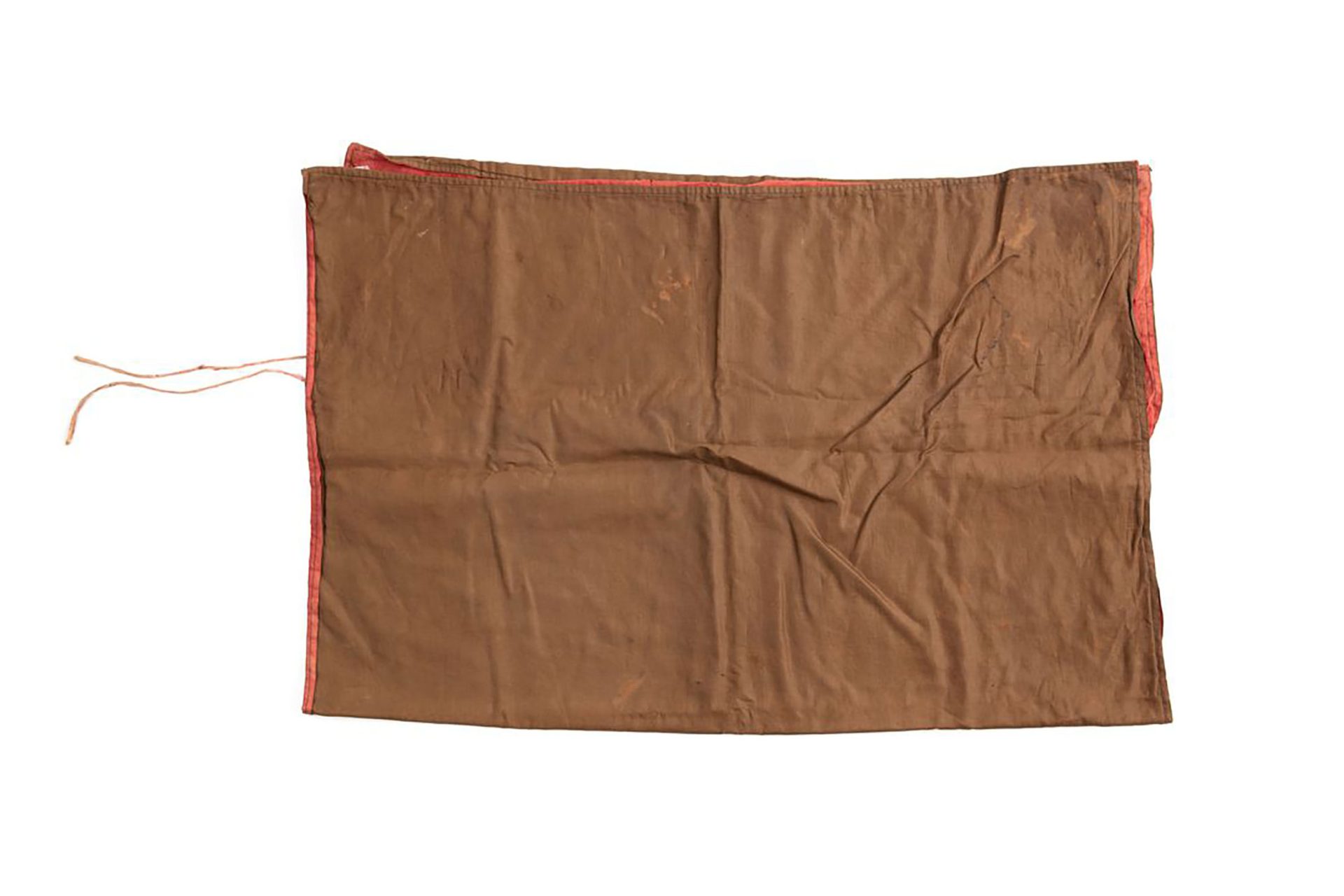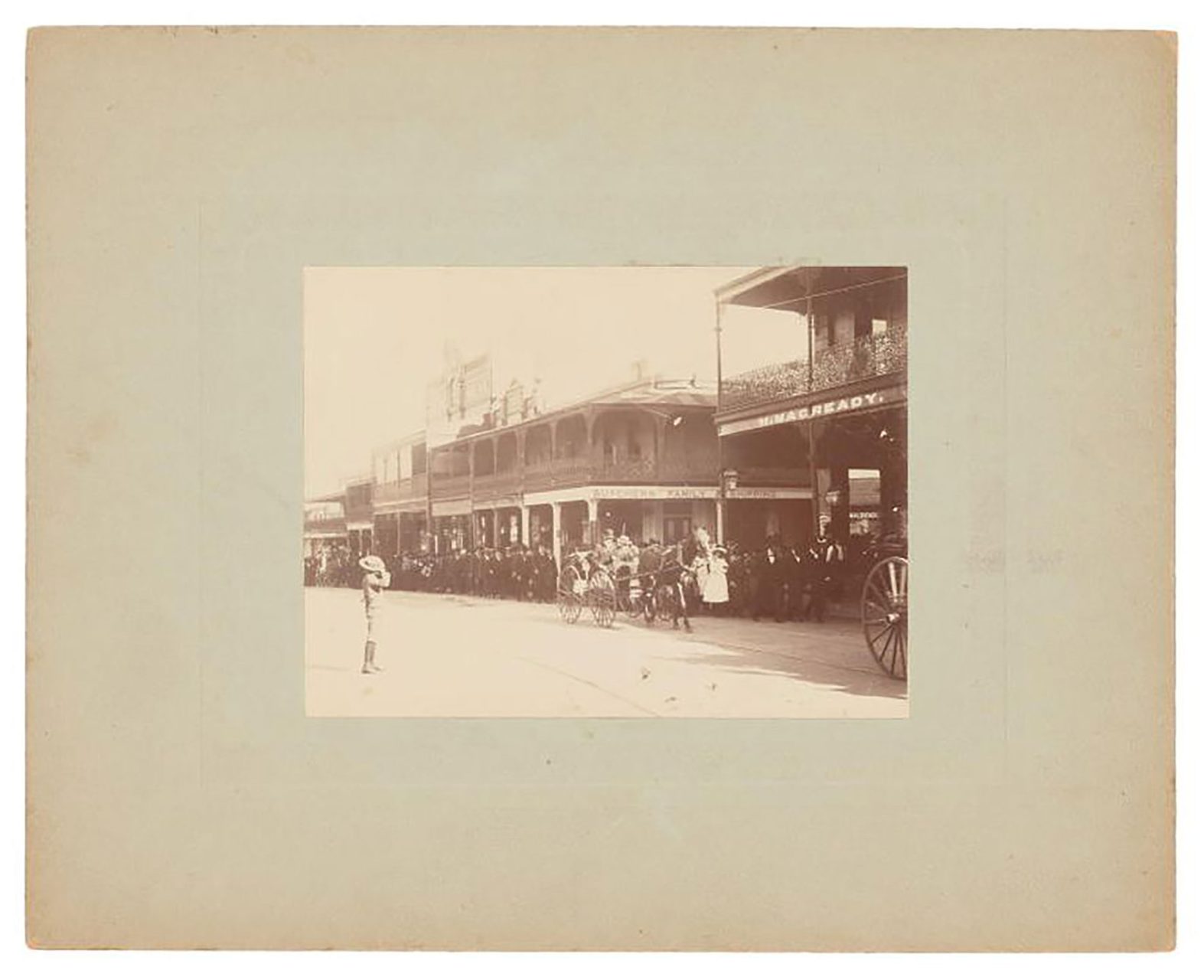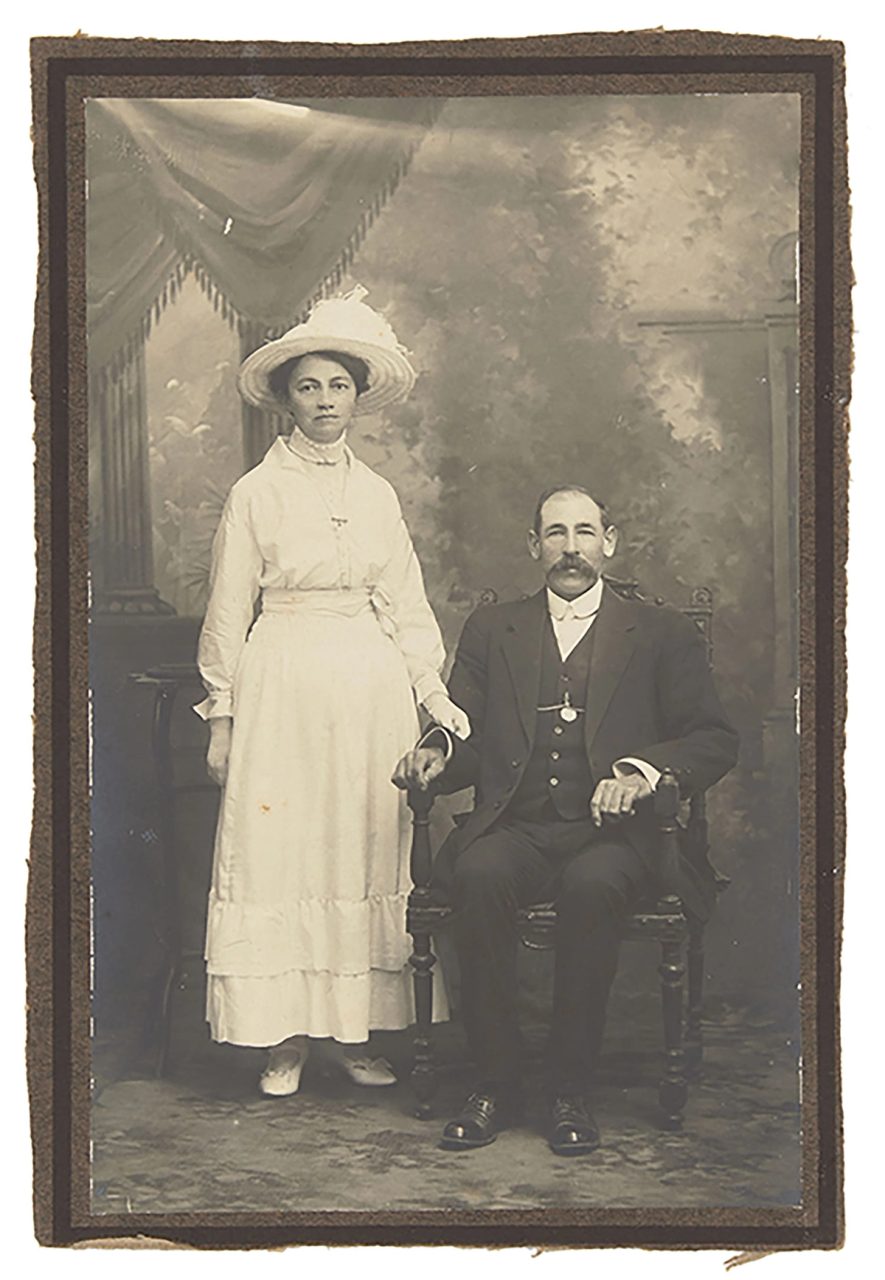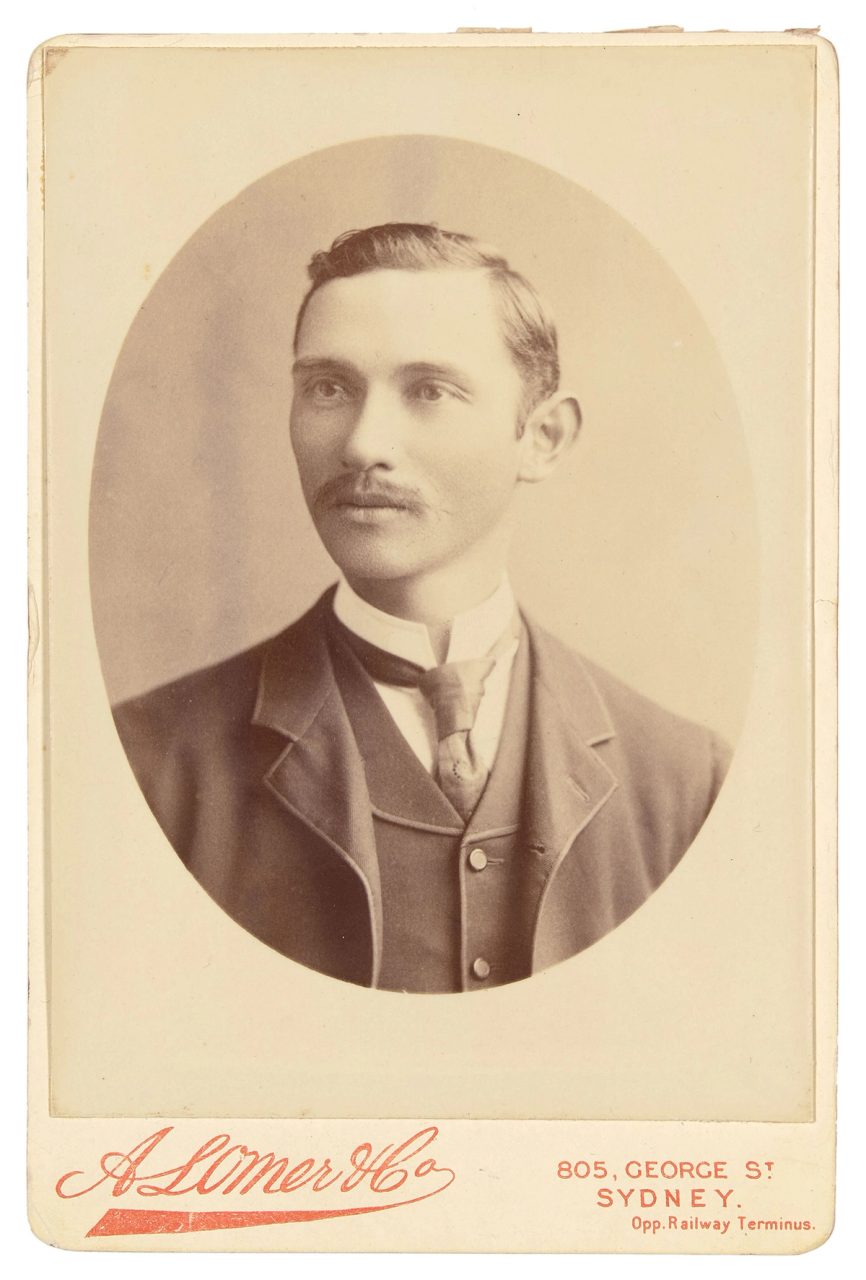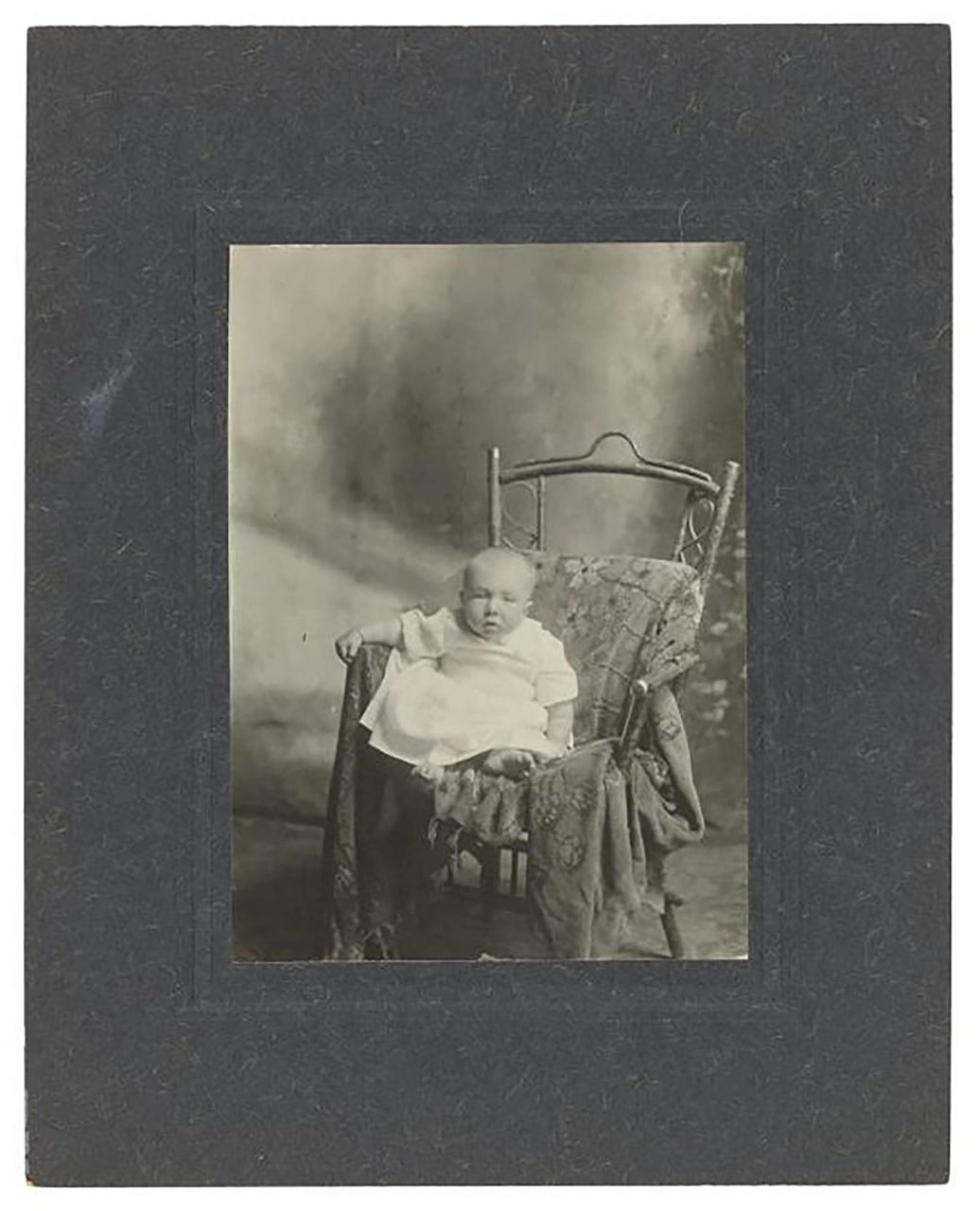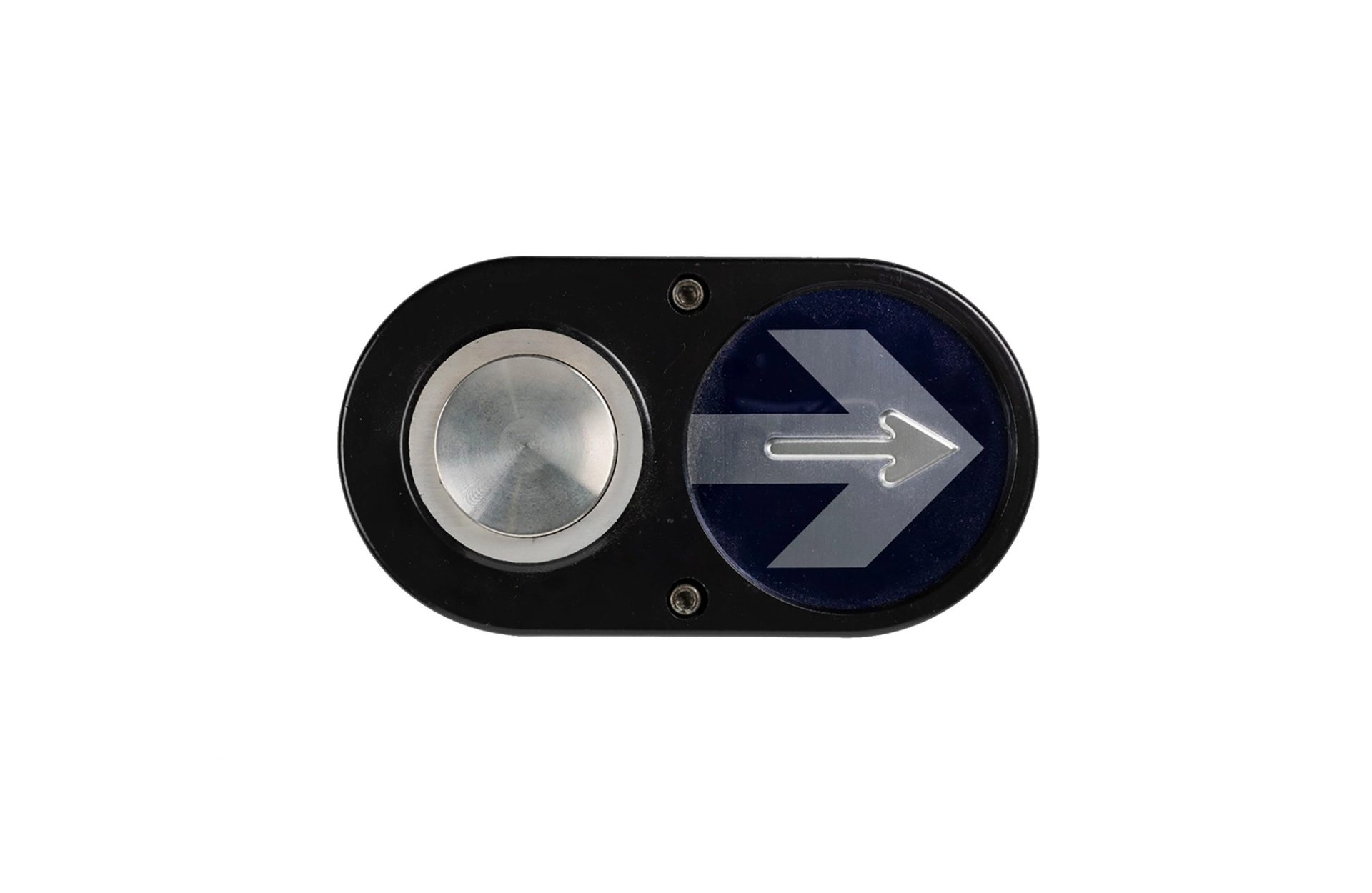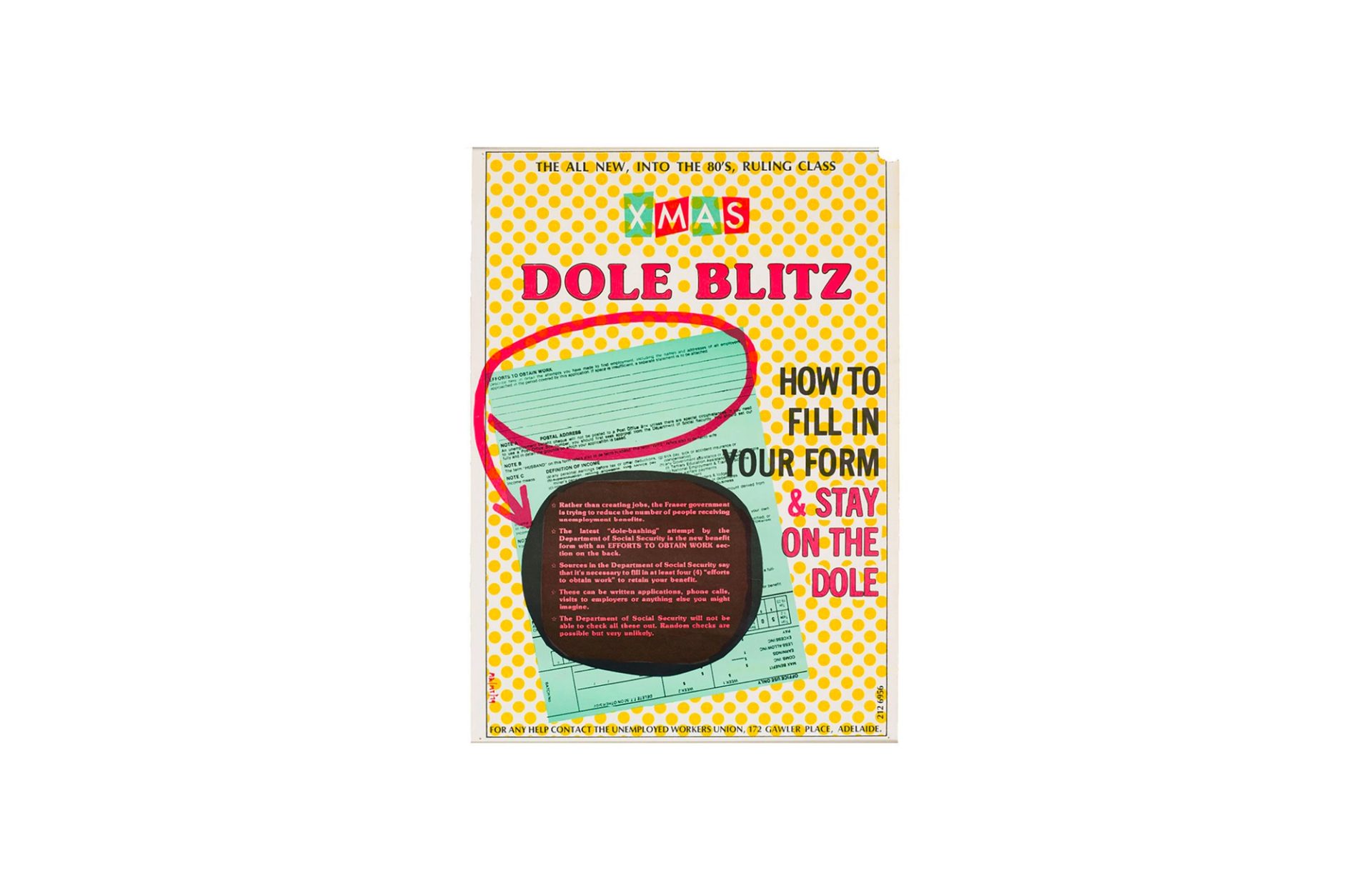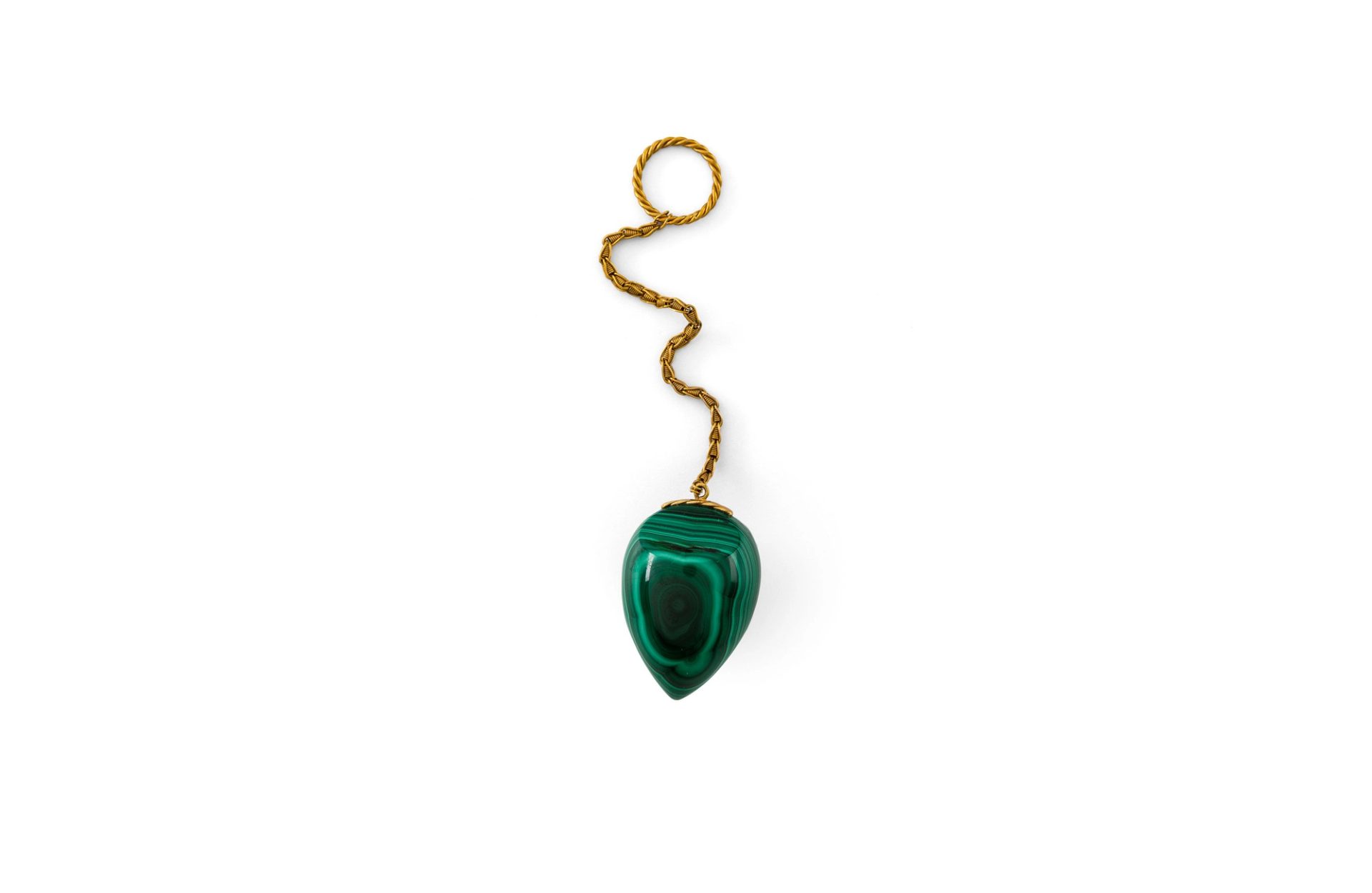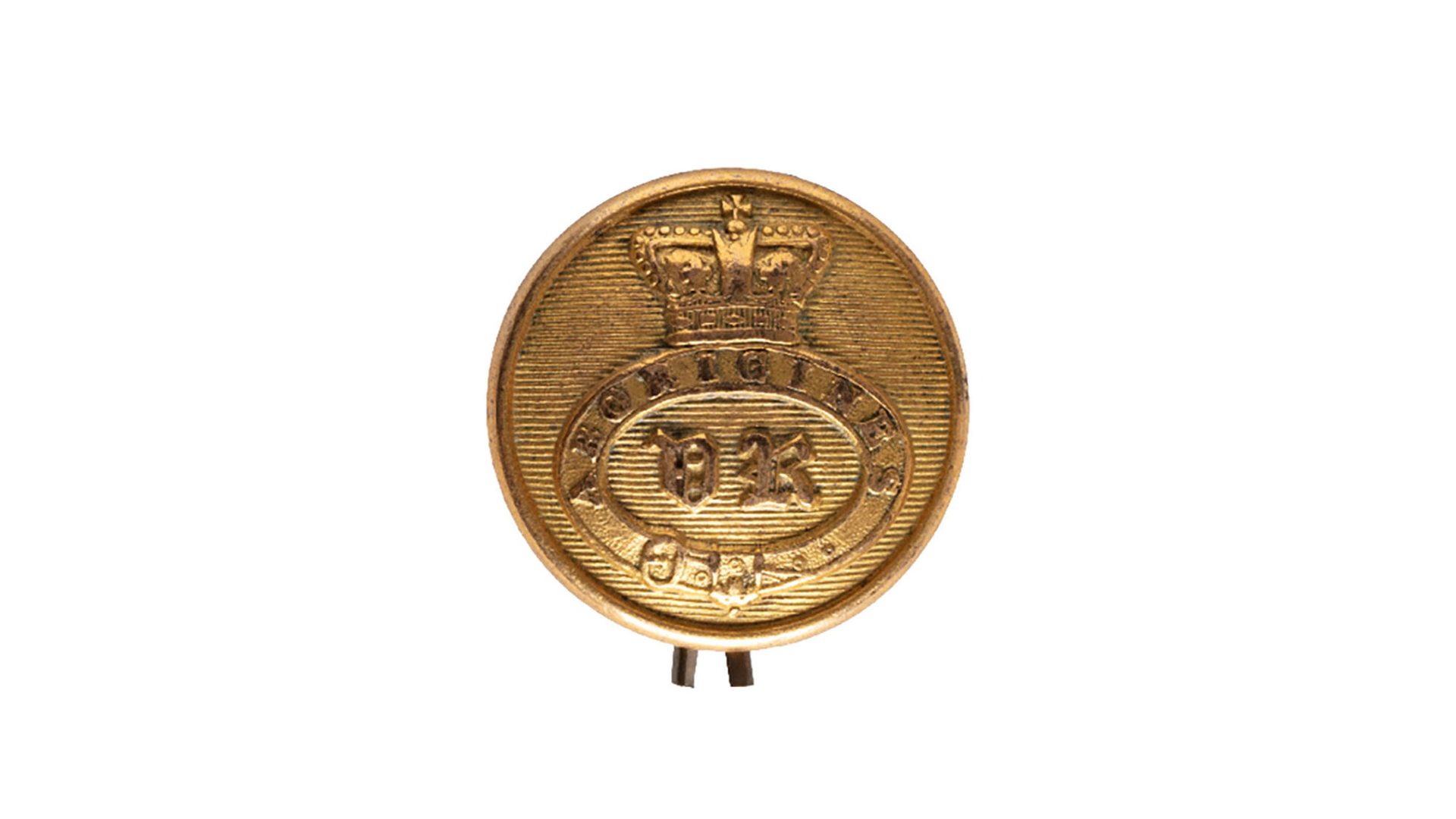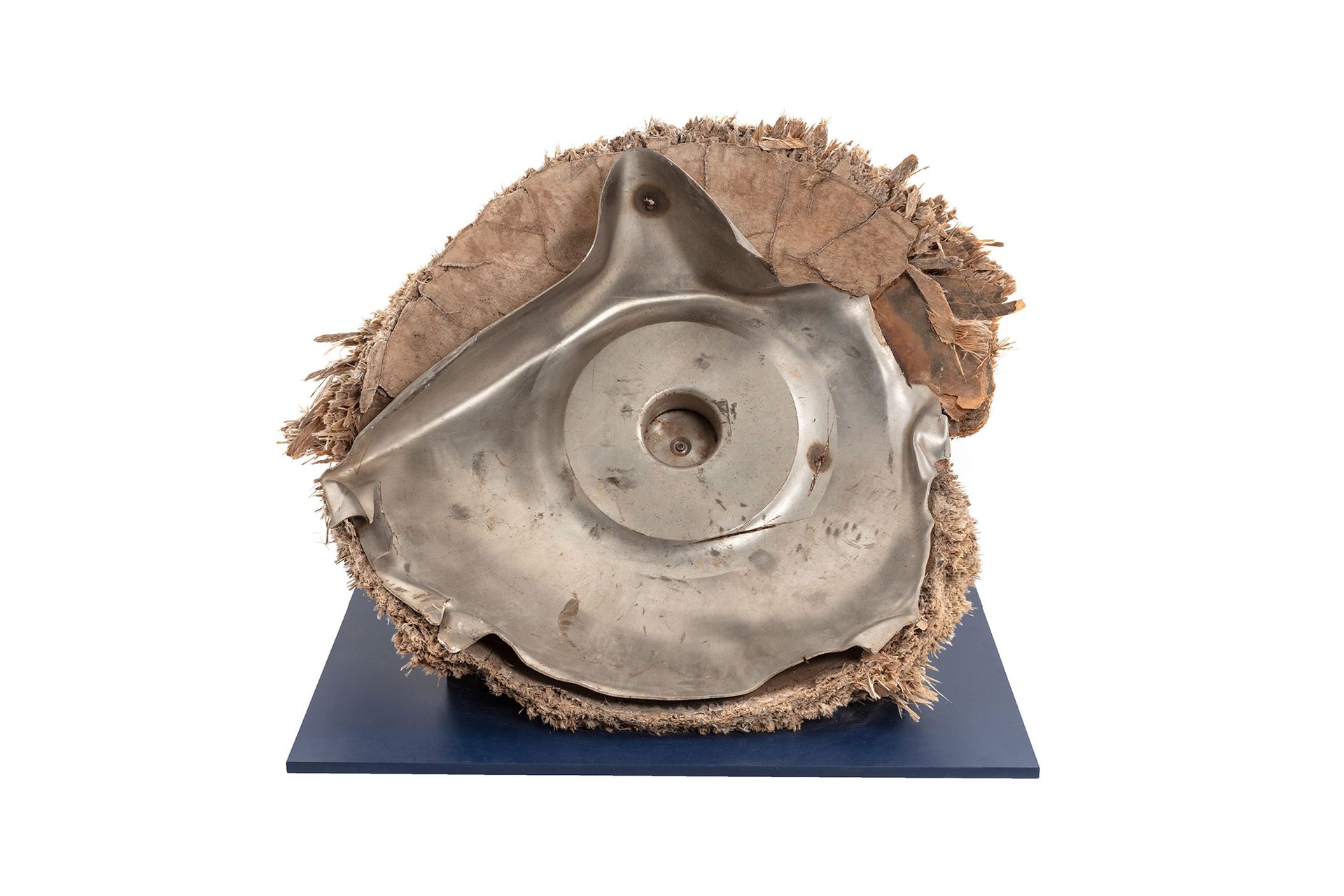Hard Read

From heartbeats to brainwaves, economic cycles to cosmic orbits, oscillations can be found everywhere. This podcast takes artists and listeners deep into the Powerhouse Collection of half a million objects to unearth stories about the vibrations, fluctuations, and movements woven through our world – and beyond it.
What does it cost to be visible? Chinese and trans people shift in and out of focus in Australia’s historical records – appearing and disappearing, code-switching, oscillating. Through the lens of turn-of-the-century portrait photography, Jinghua Qian looks at the privilege and burden of representation and the luminous power of inscrutability.
‘I fought hard for the slippery shamelessness of my life, and I don't want it displayed in a box with a tidy explanatory text. I want to imagine that every day I can wake up and become something I've never seen.’
Transcript
Chorus Broad. Normal. Hair: thin on top of head. Face: pockmarked. Two scars in the centre of chest, just below nipple line. Complexion: sallow. Build: stout. Small feet. Special features: bird outside left forearm, Japanese girl and flowers inside left forearm. Religion: Pagan religion. Colour of hair: black. Religion: Roman Catholic. Colour of eyes: Black. Eyes: brown. Eyes: brown.
Jinghua Qian That's how Chinese Australians were described in late 19th and early 20th century official records. So many of the photographs we have of Chinese Australians in this era are portraits taken in interactions with police, prisons and border control. The White Australia policy in particular produced a treasure trove of photographs. State surveillance of our ancestors then becomes an uncomfortable perk for our research now. There's no shortage of material. And the portraits themselves are arresting, even if the circumstances are enmeshed with capture and control. There are so many tiny, suggestive details, the glint of a watch chain tucked into a tailored pocket. The scruffy mullet left behind after lopping off a braided cue. Dark eyes stare back through my bright screen.
C For now we see through a glass darkly, but then face to face, now I know in part, but then shall I know even as also I am known.
JQ The photographer Atong Atem tells me:
‘My relationship to photography is constantly growing because it's an ethical relationship. It's a relationship to the ethics of tools and of weapons, and it's pretty loaded. So, it's a long project, basically.’
A gallery of Powerhouse Collection items from the Wong family shop.
JQ Hair: black. Eyes: brown. Skin: sallow.
At the turn of the century, the use of photography for identification was still quite new and contested in Australia. The historians Kate Bagnall and Tim Sherratt note that the New South Wales police started compiling photo books of mug shots in 1870, but it wasn't until World War I that passports became mandatory for anyone who wanted to travel overseas. Before that, Australia's border control regime was focused on racialised groups who sometimes resented the camera's gaze and its association with crime. 1911 in the Sydney Morning Herald, ‘The leading Chinese of Sydney feel a little sore on account of one of their number having been subjected to what they consider to be an indignity by the officials of the Customs Department.’
Charles Ewing was a successful merchant in Sydney, well known and respected in both Chinese and European circles. When customs officials told him that he needed to have his photographs and fingerprints taken before going on a short trip to China, he complained of being treated just like a criminal. Charles was married to a white woman named Susan Beck.
Many years later, their daughter Mabel, was returning from New Zealand with her husband, Alfred Young, who was also Anglo Chinese. When officials stopped her and questioned her nationality, she had her solicitor write a complaint about the indignities suffered. The letter said officials put her in a very humiliating position in front of the other passengers. That letter now sits in Australia's National Archives in a folder that also contains Mabel's fingerprints, her photograph, and these written descriptions of her.
‘Half caste, Chinese; shape of forehead, broad; shape of mouth, normal; shape of nose, flat; shape of chin, round; complexion, sallow; shape of face, round; any special peculiarities, scar across nose; colour of hair, brown; height in ordinary boots, five feet one and a quarter inches; colour of eyes, brown.’
So, what have we got here? A camera lens. Zoom in and see your own eye reflected in the glass. Zoom out and see the tarnished brass, the black leather lens cap, the Powerhouse museum object label: camera lens used by Amelia Eve Wong and Henry Wong, 1890 to 1900. Object number 97/92/14-5.
AA I remember as a kid being told, probably in high school history class, about how Africans would be scared to be photographed because they were scared about their soul being taken and all of this sort of like stuff. And as a kid I was like, that's offensive. There's not – leave my people alone or whatever. But in hindsight, having learned about colonialism and colonial histories, that's sort of how I feel about it now, like it is a capturing of the soul in the sense that once that photograph is taken, once that image exists in the world and it's owned by the person who captured it, they sort of own you as the subject and they kind of own the way that you're perceived in the world.
JQ In this country, Chinese people seem to slip in and out of focus, appearing and disappearing. You see a flash of us in the stories of the gold rush. All men, all miners. You might glimpse a ghost between the lines of the Immigration Restriction Acts, a monster with outstretched tentacles haunting the dreams of white Australia and its infantile nationalism. Then we disappear again for decades. A flash in the pan, a silhouette at the edge of the frame. Zoom out again. The camera lens is part of a large collection of items owned by the Wong family of Bolong, New South Wales that later entered the Powerhouse collection.
‘This mixed race, Chinese Anglo family left behind so much material from their lives and from the general store they ran, including letters in Chinese and English and photographs in which they appear both in front of and behind the camera.’
For me, the most powerful images are the ones in which they don't appear. The photographs of friends, neighbours, customers, and strangers.
AA And that's kind of what studio photography was. It was literally that turning point in history where Africans started to photograph ourselves in our own context and with our own sort of intention. And that felt really powerful to me. So, I decided to do that instead of writing about the history and art theory and art history classes. I wanted to contribute to the fact that it's an ongoing practice and that history isn't relegated to the past and to participate in sort of decolonial actions when it comes to talking about history. And so, I picked up a camera and started taking photos and became extremely fascinated by the possibilities.
JQ The Wong family collection is a motherlode of objects, images and texts. It also has to do the heavy lifting for a lot of things that are otherwise underrepresented in the museum's collection. Museums are changing as curators and audiences question the narratives and hierarchies of value on display. Who's telling the story and who do we assume is listening? Which objects and perspectives are missing?
It's an important and endless conversation, and I get frustrated because often it seems to end too soon with something too simple. A call for visibility, a call for what's missing to be added to the record. I often encounter that impulse in social justice movements too. ‘Be seen.’ says the slogan for Transgender Day of Visibility. And you've heard this one before, ‘You can't be what you can't see.’ I just don't think that's true. I mean, representation matters. I think it's important that museums and cultural institutions reflect Australia as it is in full colour and all its mess and cruelty and complexity. And obviously I'm interested in history and lineage and asking what's been forgotten. But I have no real desire to see people like me or bodies like mine on the plinths cast in cold bronze. I fought hard for the slippery shamelessness of my life, and I don't want it displayed in a box with a tidy explanatory text.
I want to imagine that every day I can wake up and become something I've never seen. I want to imagine I can be opaque, invisible, inscrutable. Inscrutable. Maybe it's the non-binary urge to refuse classification. A fear of being perceived and subjected to the mortifying ordeal of being known. Maybe it's just another internet cliché about living under late capitalism. But I know I'm not the only one who recoils at the idea that we can't exist without a visible precedent. The literary critic Oliver Reeson writes that the phrase ‘You can't be what you can't see’ –
Oliver Reeson Implies that a way of being needs to have already been represented in popular culture in order to be emulated in the real. So, which is it? Is popular culture supposed to reflect us? Or is it our job to reflect popular culture?
JQ I have to believe that invention is possible, that real life might transcend what's already been written and represented, that the past shapes the future but doesn't define it. The poet Lucille Clifton writes, ‘Both non white and woman. What did I see to be except myself? I made it up.’
C Hair: black. Eyes: brown. Skin: sallow. Hair: black. Eyes: brown. Skin: sallow. Hair –
‘The written descriptions of Chinese Australians become a sort of incantation, evocative and alienating at once.’
I think about how I struggle to describe myself for blind and low vision audiences in Zoom meetings. I am non-binary, but I don't want to say that I am what a non-binary person looks like. I want to say that who I am doesn't always show on my face. The word inscrutable comes up a lot in Australian writing about Chinese people. From the time the Wong family was setting up shop right up until the late 20th century the idea was that Chinese people, and particularly Chinese faces, were hard to read. Opaque. Expressionless. Bland. Unintelligible. Illegible to the white gaze. For instance, in 1927, The Bulletin Magazine published a story titled 'The Pitiless Orient', which starts, ‘The Chinaman, inscrutable ever, gazed with leering eyes at the girl standing defiantly before him. A compatriot was at his side, his face equally unfathomable.’
I think there's something powerful in that, maybe even a kind of dignity. Like Charles Ewing objecting to being photographed. Like his daughter, Mabel Young, refusing to show her papers. I think there's something to be said for being inscrutable. For refusing white Australia's scrutiny and surveillance. Or rejecting cisgender standards of passing. Or just keeping something for yourself. In and out of focus. In writing and researching this story at a time when both China and trans issues are in the spotlight, hyper visible. So, it's been a weird time for me. Suddenly my expertise is in demand, and I also want to disappear more than ever.
I've been thinking a lot about the power of inscrutability and eligibility. I started out as a poet and then kind of fell into journalism. And now often my job is basically to explain China and Chineseness to white Australians. It's embarrassing. I feel exposed and I'm never sure if it's worth it. I joke about how white people know too much now, but it's not really a joke. Knowledge is power and why am I giving it away? For what purpose? Something I keep returning to in my writing is the idea that visibility is neither recognition nor understanding. It's ideologically neutral. One thing I do know is that being visible is all sorts of dangerous.
OR When I was a kid. If I saw queerness on screen, I did feel a profound feeling of recognition and excitement at seeing it. And actually now, often now when I watch a lot of queer culture, I really recoil from it and cringe and it's not a sign of dignity for me. But I think what I'm recognising now isn't a sense of possibility, but I'm recognising, oh, I can easily be made into this product that gets sold. And that's like very upsetting to me.
AA I mean, when we claim our own power and when we reclaim the camera, we're trying to look dignified. We're trying to undo the colonial damage by presenting ourselves in this really particular way that can, in its own way, be really, really damaging because it's like you put on your best outfit, you make sure you're well presented. And yeah, that's problematic in its own way, like it is empowering. But why is that empowering? The photograph becomes this permanent relic. So, who is allowed to have a permanent status in our history? How do we have to be in order to be given permission to exist in the records, in documentation?
JQ Hair: black. Eyes: brown. Skin: sallow.
In 1942, the US War Department published a comic on how to tell Japanese and Chinese people apart. It instructed readers that the Chinese are dull bronze in colour, while the Japanese are lighter, more on the lemon-yellow side. A similar guide published by Life Magazine in 1941, claimed that Chinese allies have parchment yellow complexions compared to the earthy yellow of Japanese enemies. Writing about the Cold War, Sunny Hsiang argues that the emergence of two Chinas, two Koreas, and two Vietnams establish the Oriental as a perfect cross of racial and ideological unknowns. Or, in other words, as dangerously hard to read. She writes, ‘The Oriental exemplified the blending of two kinds of colour; one hidden in the heart and the other worn on the skin.’
It's the red scare overlaid with yellow peril. It's the fear of not being able to tell the good Asians from the bad Asians. Some people think that the ultimate act of racism is not being able to tell people of colour apart, and that the answer is to know more. And yeah, it's pretty awkward being mistaken for the wrong Asian, but it's just as uncomfortable when someone tries to guess my ethnicity, especially when they get it right. For me, racism isn't just a problem of ignorance or inaccuracy. It's an ideology. And it's deliberate. Making it more accurate and more precise, arming it with more knowledge and data that only makes it more efficient.
Systems of surveillance are more extensive and insidious than ever. Facial recognition technology has been used to automate racial profiling. What's worse, every time we tag ourselves in a photo or someone else tags us, we're training algorithms that could be turned against us. Zoom in.
In China, facial recognition is helping the authorities scale up their persecution of ethnic minorities. When I scroll through the rRReal face of White Australia database now, I think of the faces of Uyghurs incarcerated in China's detention centres. The recent Xinjiang police files leak revealed thousands of mug shots. Endless rows of eyes staring back through the screen. Each photo was tagged with the subject's name, age, location, blood type and reason for internment. Those reasons, they were things like listening to an illegal recording of a sermon, growing a beard or wearing jilbab.
Islamophobia in the West operates on similar assumptions that you can tell the good Muslims from the bad Muslims. What if that can't tell us apart? This is a strategy. A superpower. Like a zebra's stripes. What if I'm sick of being your favourite exception and I want to hide amongst my kind. Fade into indiscreet unmellow yellow. I don't want to be legible to military intelligence and advertising agencies or to state and corporate interests. I want to protect my secrets and my soul from the camera's flash. I want to be inscrutable. I want to be dangerous. I want to be disorienting.
About Jinghua Qian
Jinghua Qian is a writer interested in race, resistance, art, desire, queerness and the Chinese diaspora. Eir work has appeared in Overland, Peril, The Guardian, The Saturday Paper and on television in ABC’s China Tonight. Ey lives in Melbourne’s west on the land of the Kulin Nations.










